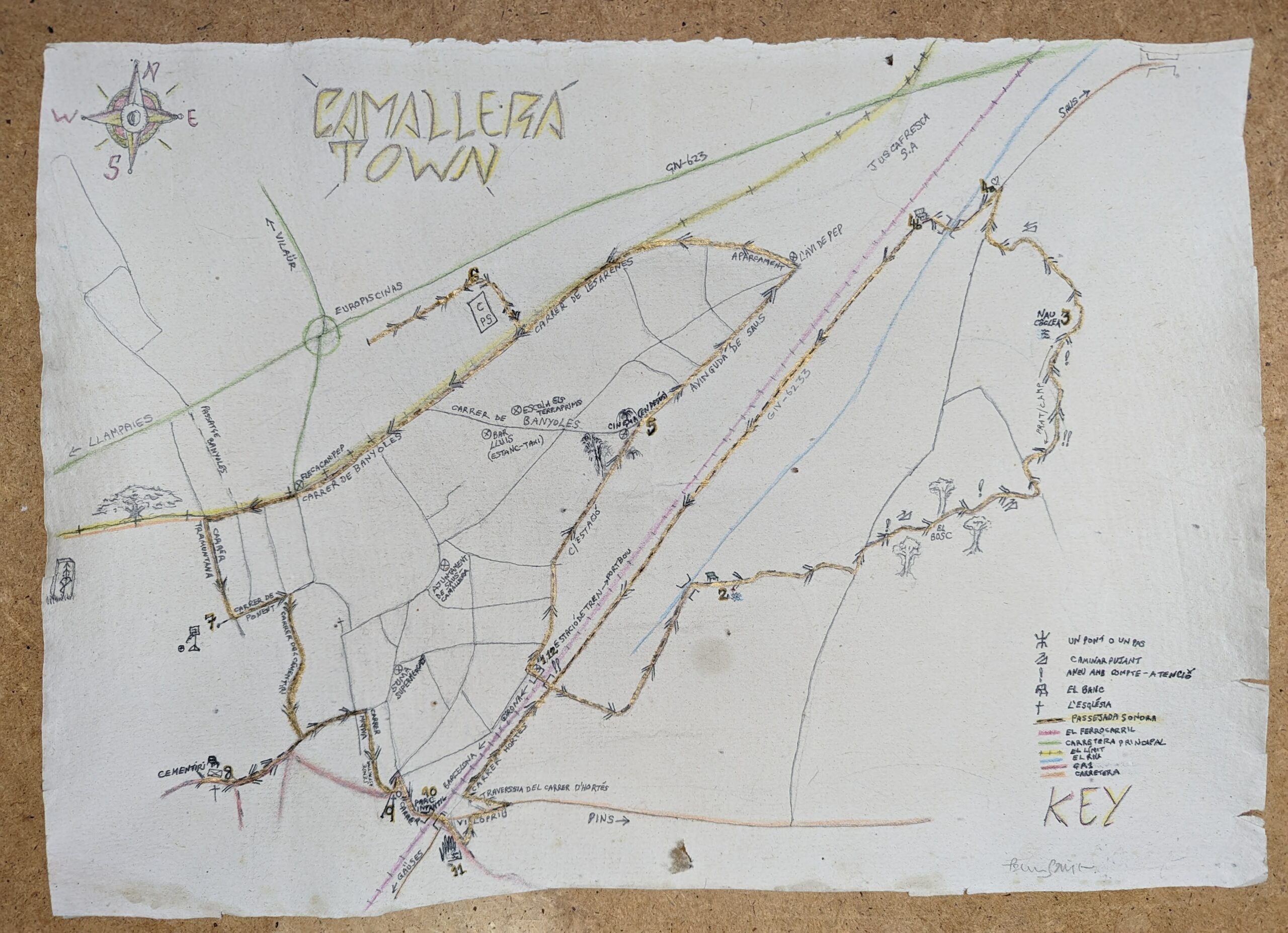How do you capture the sound of somewhere? The sound of a whole town? Especially if you don’t speak the language well enough to gather the words of the people who live there or reproduce texts associated with it. I walked around Camallera’s edge, mapped a trail of its boundary, with 12 stages, and distilled the natural and industrial noise, the unexpected happenings, and the feeling and sense of the area. I was informed by what I had read and been told, and I listened. Later, I played with these sounds, making a series of original pieces and assembled them into a montage. You can make a figure of eight walk (a railway line creates a loud diagonal down the middle, breaking the walk into two loops) and at each stage you can sit quietly with headphones on and hear a symphony. It was created during an artist residency at Nau Côclea, Camallera, Cataluña. The walk is on flat, smooth land, except for one short climb through the woods between stages 2 and 3. It will take approximately 1.5 hours, depending on your pace and how much time you spend at any one stop. The Camallera Sound Walk has no words; you do not have to speak one language or another to participate. It uses all manner of sounds and various versions of silence which I hope will evoke feelings, memories, thoughts, and bring some of the local history to life, even if you don’t know any details of it.
Credits
Hosted by: Nau Coclea


